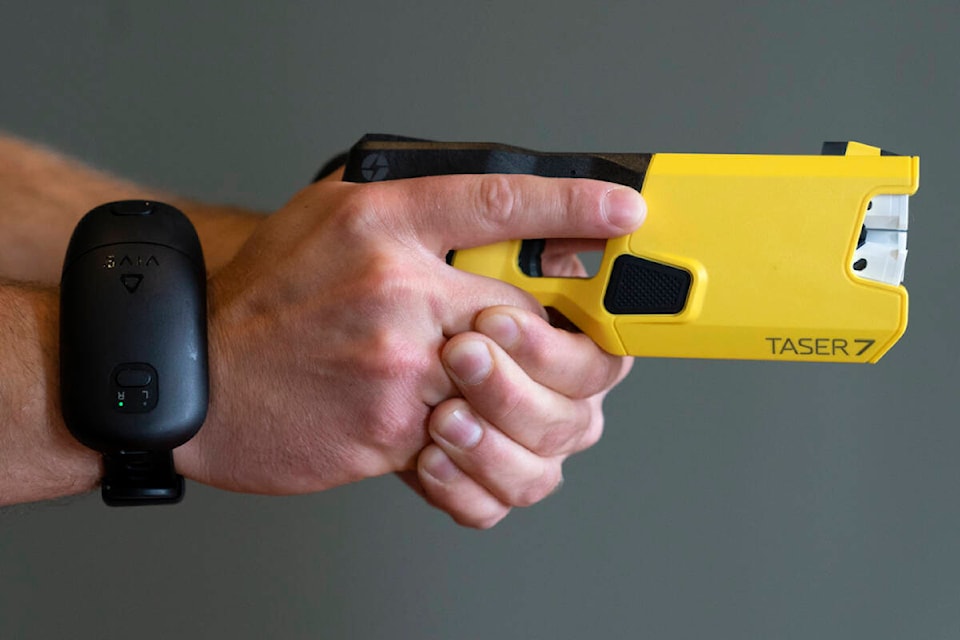B.C. has approved a new grade of Taser for police to use in the province, which allows them to fire two shots in a row and at a shorter distance, among other features.
The province says it ran a review of the weapon with various organizations and trialed it with RCMP and police agencies in Victoria, Vancouver and Port Moody from April to December 2023. No serious injuries or deaths were reported during that period, according to the province.
As compared to older models of Tasers, the Taser 7 is capable of discharging a second shot without reloading a new cartridge, can be fired at a shorter distance, offers two laser sights, provides a warning signal prior to being discharged and uploads data for police officers instead of them having to do so manually.
It’s already being used by police in Ontario, Quebec, Nova Scotia, New Brunswick, Saskatchewan and Alberta.
In B.C., Tasers are categorized as “intermediate weapons.” Also known as “less-lethal weapons” these devices are intended to incapacitate a person or cause compliance through pain, but they are not “likely to cause serious injury or death,” according to provincial policing standards. Other intermediate weapons include batons, pepper spray, tear gas, and bean bag or rubber bullet launchers.
The categorization of Tasers as intermediate weapons has raised concern from some groups in the past. The Canadian Mental Health Association’s B.C. division has previously said that, while it prefers the use of Tasers to lethal force, it believes they should only be considered when all other options have been exhausted.
There is no B.C. or Canadian database of Taser-related injuries or deaths, but a 2013 report from the Council of Canadian Academies found there had been about 33 deaths proximal to conductive energy weapons since the devices were introduced in the 1990s. At the time, the expert panel said its review of available evidence suggested “that while fatal complications are biologically plausible, they would be extremely rare.”
Amnesty International published a report in 2007 that raised concerns about Canadian police using Tasers inappropriately or excessively.
“While all weapons have the capacity to be abused when not strictly controlled, Amnesty International believes electro-shock weapons are particularly easy to abuse as they are portable, simple to deploy and have the capacity to inflict severe pain at the push of a button, often without leaving marks,” the human rights organization wrote.
It reviewed a number of cases in which police officers were determined to have used excessive force while deploying a Taser on someone, including several incidents in B.C.
Amnesty said it recognizes Tasers as an important means to avoid otherwise lethal options but, like the Canadian Mental Association, recommended that more restraint be used.
Approved conductive energy weapons in B.C. now include the Taser X26P and Taser 7.
READ ALSO: Judge awards trucker tasered by Surrey Mounties $317K in damages
READ ALSO: Abbotsford police officer found not guilty of assaulting suspect in 2021
READ ALSO: Expert says number of police shootings in Canada ‘spectacularly unrelenting’
